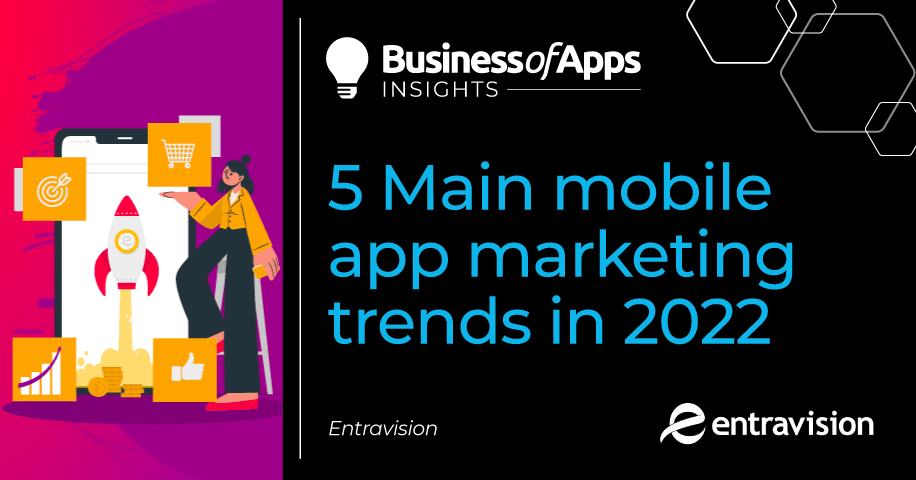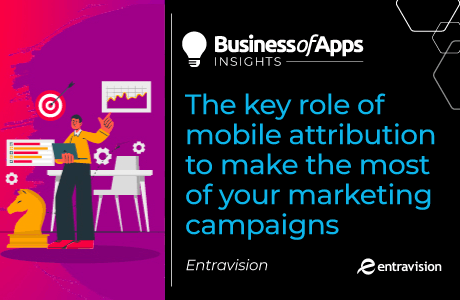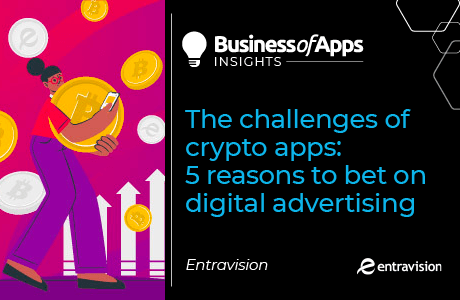We’ve made it to the mid-point of 2022. So, now is a great time to assess your current strategies for mobile app marketing. Are you meeting the mark with your current practices? If not, we’ve got some great ideas to help you finish the year strong.
We’re now a society heavily reliant on our mobile devices. Look around. Everywhere you see, someone is holding a smartphone. It’s our lifeline these days. So, to thrive in any industry, you need a mobile app that users want not only to download but also interact with on an ongoing basis. Rise above the digital world’s clutter and ensure you’re staying relevant with new trends!
So, without further ado… here are the 5 Main Mobile App Marketing Trends in 2022 (so far)!
Enhancing mobile commerce
Do you want to increase revenue? Then you need to have a seamless m-commerce experience ready for your customers. Since the COVID-19 pandemic and the stay-home orders pushed people to change their purchasing practices, we’ve seen a major uptick in online shopping. Even now, as more people are willing and able to leave home, consumers have become reliant on the convenience of shopping right from their phones. In 2022, over half of all online orders originated from mobile devices. So, if you want to gain new consumers, build loyalty with existing consumers, and thrive financially, you have to make m-commerce your first priority.
Extending video content integration
The COVID-19 pandemic also brought about an uptick in live streaming. When people can’t attend an event, we have to help them feel like they are part of the event in a different format. So enters video streaming. Connecting with consumers through video makes advertising on live streaming apps a wise addition to your mobile marketing strategy.
It’s not just live events that have garnered increased attention. Using mobile devices to stream on-demand content has also blown up. So, keep advertising with on-demand streaming services to continue to reach new audiences.
And finally, take notice of how video is also now more influential in social media. TikTok’s video platform has become a goldmine for advertisers. One of the best ways to reach your audience is through viral marketing. Have you heard of #TikTokMadeMeBuyIt? Well, Gen Z users are very familiar with it. It’s an organic snapshot of just how effective user-generated content can be. And it’s not just TikTok that is having success with videos. Instagram and Facebook have also added a video feature called Reels. All of these interactions begin in the palm of our hands – with our phones.
Developing in-person and mobile app integration
We already know that online shopping has become a dominating force, but have you noticed that you now see shoppers in the store using their phones to assist with shopping? Whether a mom is referencing her shopping list, looking up a recipe to check an ingredient list, or simply searching the retailer’s site to find out what aisle a product is in – the phone is an integrated part of the shopping experience. So, consider how you can make this already integrated experience more meaningful. And when it comes to advertising, showcase how you’re in touch with this current trend by highlighting the integrated in-person and mobile experience in your marketing campaigns.
Here are a few ideas to help you get started:
- Offer rewards and coupons exclusive to mobile
- Develop a payment feature from your app that connects to the consumer’s credit card
- Incorporate QR codes
Building loyalty with mobile games and social networks
Guess what else happened during the COVID-19 pandemic? The popularity of mobile games grew exponentially. Many people find mobile games to be a fun and relaxing way to pass the time. Most mobile games require users to beat levels and encourage ongoing interaction, so users open gaming apps at a high frequency. As such, advertisers on gaming apps have an increased opportunity to gain impressions and interactions. As a peripheral benefit, advertisers also build a positive brand association in the consumer’s mind thanks to repeating brand presence on a game that the consumer enjoys.
As people continue to build social networks online, we see that both online games and social media platforms can help advertisers further benefit from user-generated content. For example, a mobile app game may partner with a brand for in-app purchases. If that purchase can be visible to others in the game network, it can enhance loyalty with other gamers.
Similarly, when brands hire influencers to push their products on social media sites, consumers that are usually callous to traditional marketing tactics are more likely to have a positive opinion of the brand and product. Now, more than ever, consumers are seeking authenticity. So, it is up to advertisers to recognize meaningful ways to connect with consumers.
Optimizing search for voice and visual performance
Mobile technology continues to become more sophisticated. It is now common practice for humans to speak to machines – our phones and home devices are responsive to our questions. And the good news for marketers is there is an opportunity for the devices to respond with suggestions that can include purchase suggestions. So, marketers need to optimize for voice search.
Furthermore, we’re not just using our phones for personal photos anymore. Sophisticated advancements now include opportunities for our mobile devices to detect an image and match it with mobile search. So, if this is the future of search, marketers must also be ready for visual optimization.
So tell us, do your mobile app marketing strategies have what it takes to outpace the competition this year?











